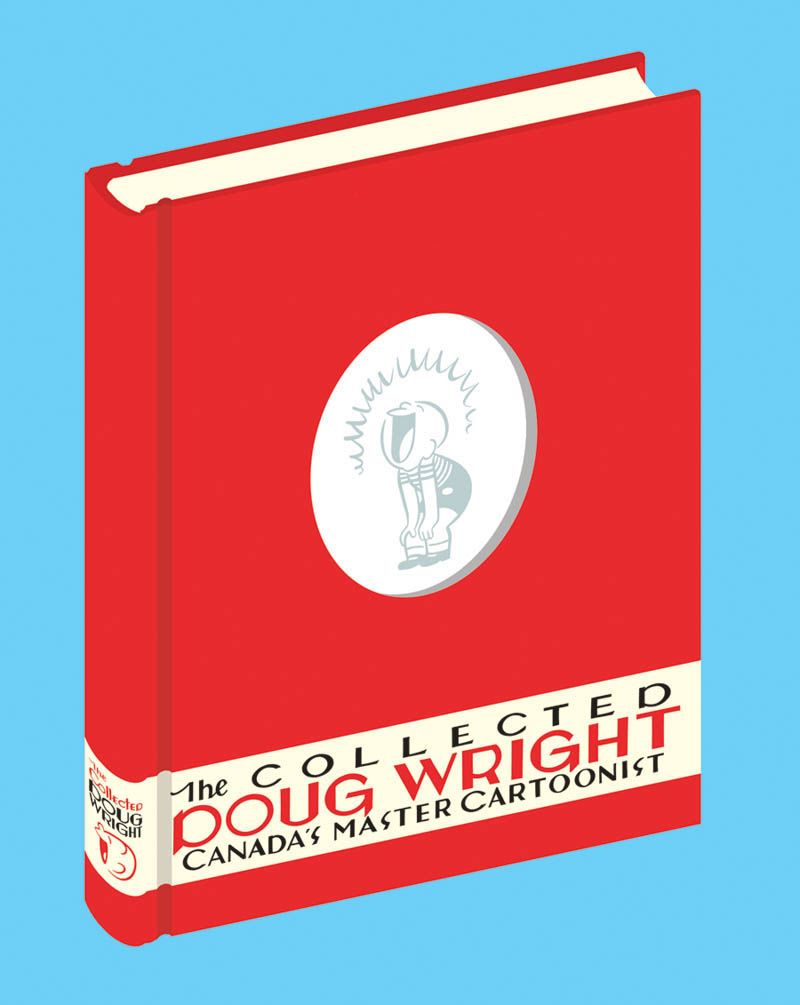The Collected Doug Wright Vol. 1
Edited by Seth and Brad Mackay
Drawn and Quarterly, 240 pages, $39.95.
The first thing you notice is the line. It's usually rail-thin, although it will sometimes gracefully thicken when forming the back slope of a character's head or traveling along someone's back or legs. It's simple, and seemingly unfussed, but it's never less than assured, capable of rendering just about anything with clarity and aplomb, be it a typical 1950s suburban neighborhood, a mud-soaked little boy or the wood paneling on a corner table.
Were that all Doug Wright had to offer comics, it would be enough to merit attention. The medium is filled with great and talented artists, but few are capable of the charming effortlessness that's on display in The Collected Doug Wright, the first of two volumes designed to bring a renewed appreciation to the Canadian cartoonist.
Indeed, one of the artists he most draws parallels with is his American contemporary Hank Ketcham, and not just because both are largely known for their strips about over exuberant little boys -- Ketcham with Dennis the Menace and Wright with Nipper. The difference, however, lies in the substance behind the drawing. Ketcham is rightly revered as a superb craftsman, but one who nevertheless leaned heavily on a stock gag formula that over the years relied less on observation and human behavior and more on cute, rote situational comedy.
Not so with Nipper. In addition to being lovingly rendered, the silent strip overflows with knowing, true-to-life humor about the realities of parenthood. No doubt drawn from his own experiences as a father (at least in its later years, as Wright began the strip before he had children), the weekly strip doesn't attempt to portray its lead as an innocent angel. Nipper frequently gets into trouble, and his parents are just as frequently exasperated (it should be noted that Wright's knack for facial expressions are one of the selling points of the strip) but he isn't a menace. More that he's blessed with a curiosity and eagerness for play that has to be constantly stepped on by his parents (more so when Nipper is blessed with a little brother). It's a situation that anyone who's had to take care of a preschooler for more than two hours can relate to.
Much has been made by some of how Canadian the strip is and I suppose with the constantly changing seasons there is a particularly distinct northern humor and sensibility. I tend to regard the strip as a rather universal creation however, Wright's milieu was one that any reader young or old can easily identify with, regardless of their country of origin.
While the Nipper strips make up the bulk of this volume (and continue no doubt into the next one) I don't want to slight the other material collected here. Co-editor Brad Mackay provides an excellent introduction to the artist, delving extensively into Wright's background and temperament. What's more, the abundant magazine illustrations, gag cartoons, other strips and photos of the artist and his family help provide a well-rounded picture. And all bound in a handsome oversize hardcover that once again showcases Seth's talents as a designer.
There's been a tendency to place Wright in the upper eschelon of his contemporaries, alongside Harvey Kurtzman and Charles Schulz. I'm not sure that sort of overeager boosterism is really necessary, though he certainly does share some overlapping qualities with those creators. Wright's work, at least what's lovingly presented in this volume, is strong enough though to stand on its own and demand attention without the comparisons, however apt someone may find them to be. I'm content and grateful that a few people took the time and effort to re-introduce this artist to a new generation of readers like myself. That's enough.


